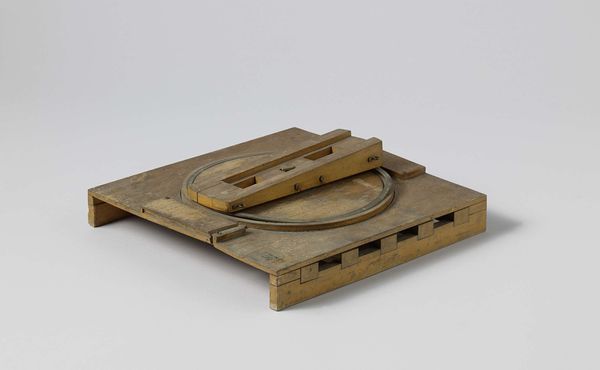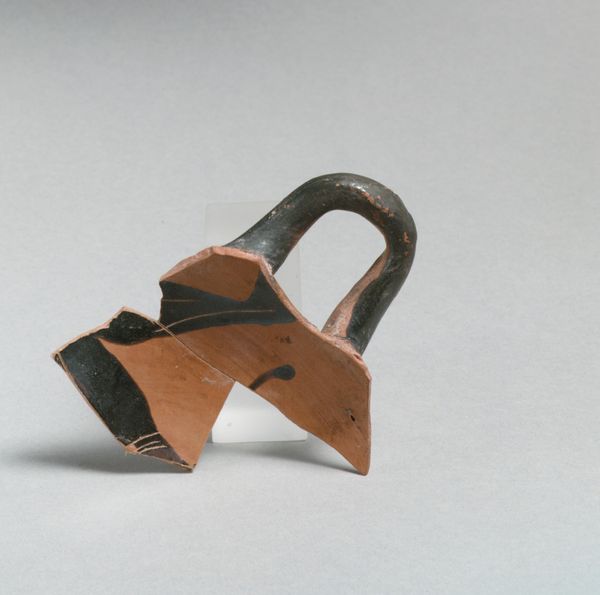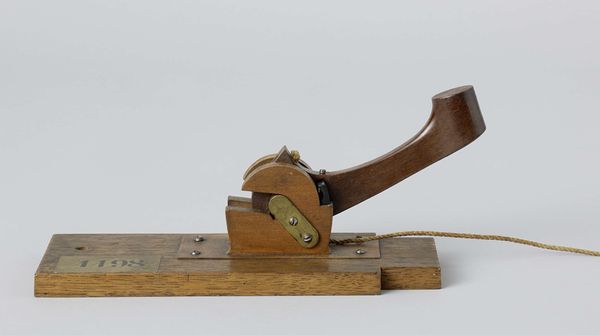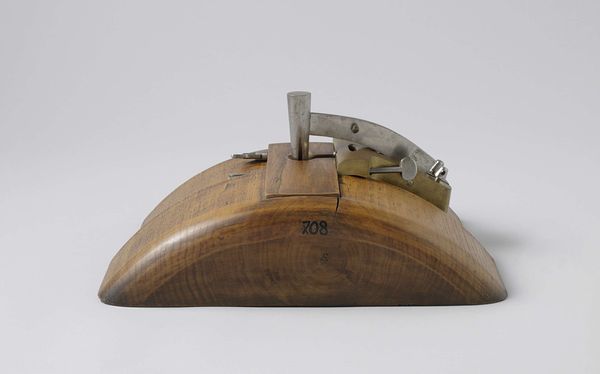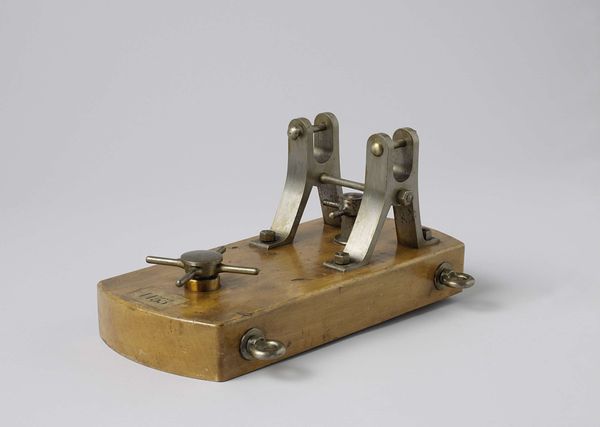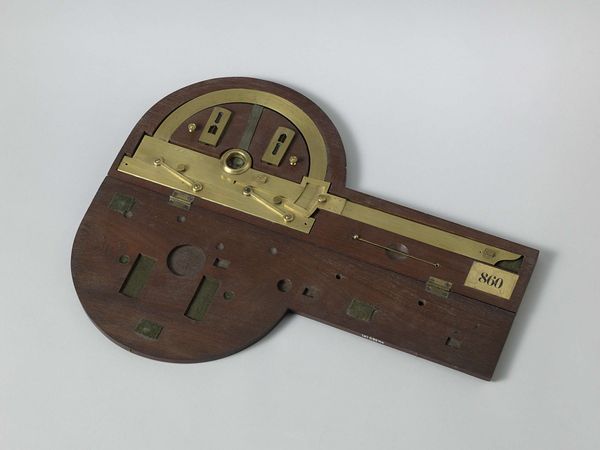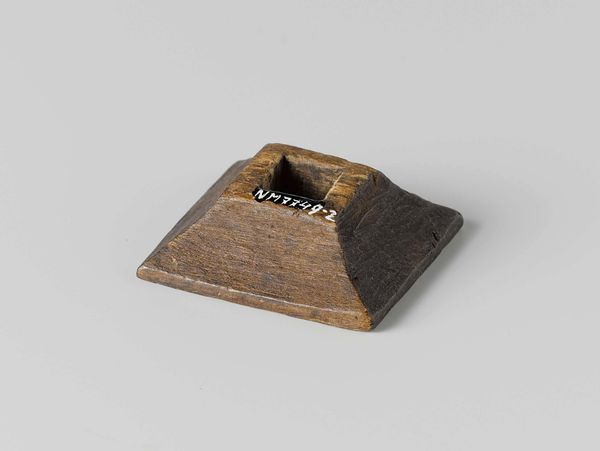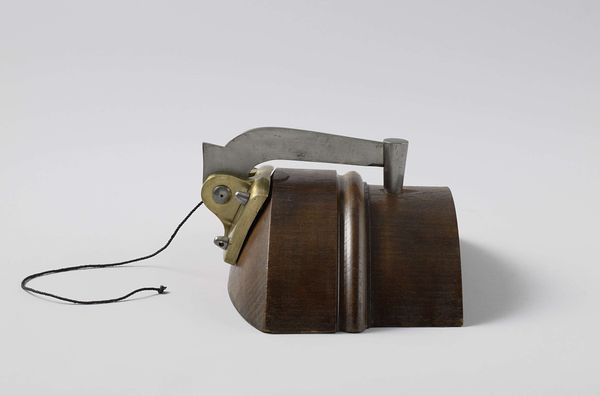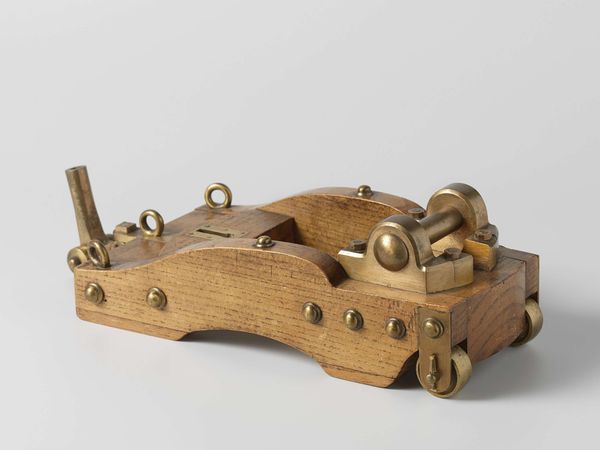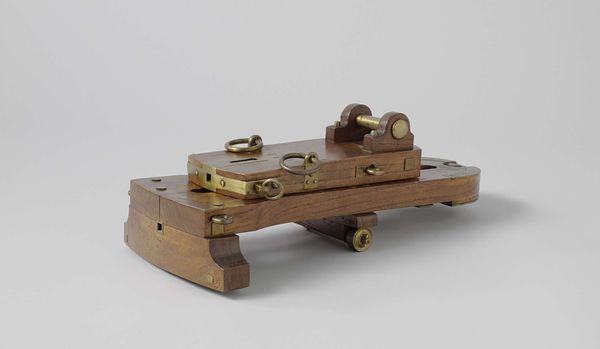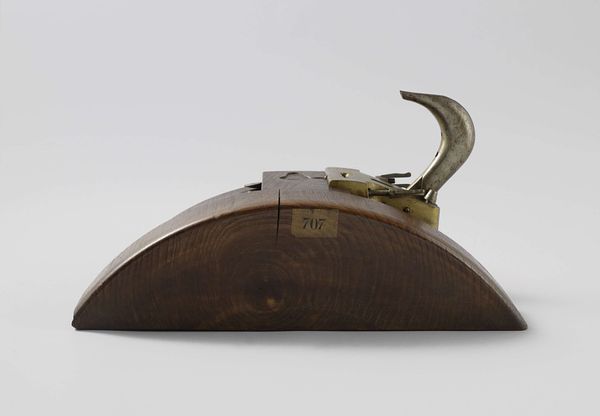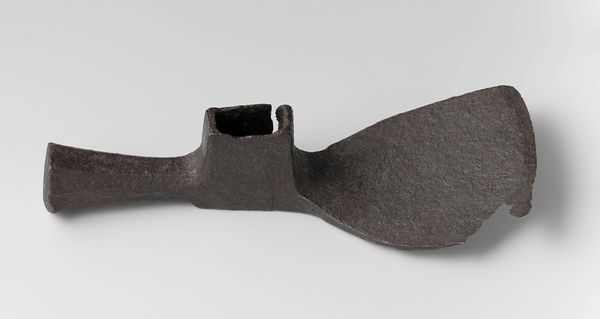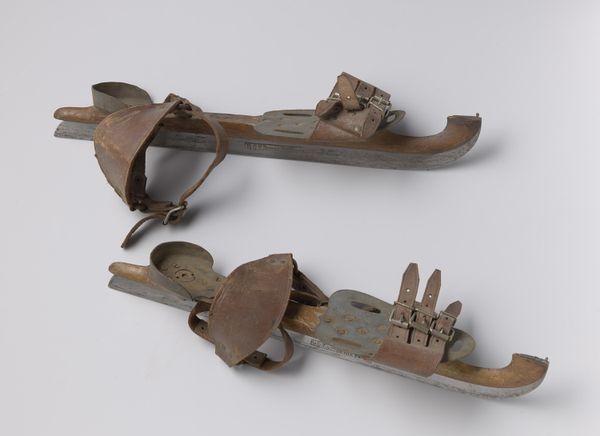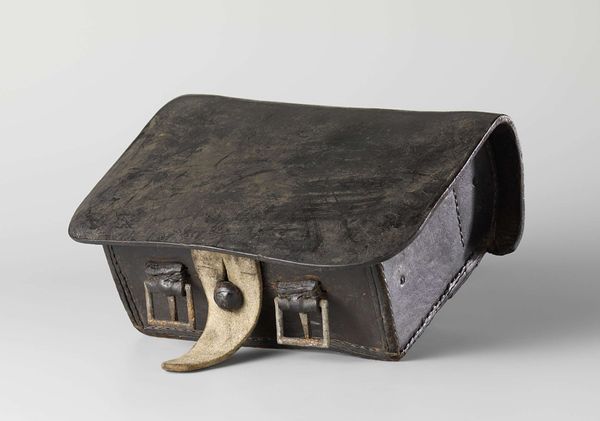
sculpture, wood
geometric
sculpture
wood
Dimensions: height 4.8 cm, width 25 cm, depth 13.3 cm
Copyright: Rijks Museum: Open Domain
Editor: This is a wooden sculpture, “Model of a Chain Flange of a Capstan,” made around 1860. The geometry is very clean, almost minimalist for its time, but I'm intrigued by what its original function was. What's your perspective on this piece? Curator: I see this sculpture as a powerful representation of 19th-century industrial ambition and its entanglement with colonialism. The capstan, a machine used for hoisting heavy weights on ships, symbolizes the logistical backbone of maritime trade and, by extension, the exploitation of resources and people across continents. How do you think its being made of wood plays into its interpretation? Editor: Well, the warmth of the wood contrasts with the cold, hard function of the machine it represents. It's like a humanizing element. Curator: Exactly! Wood, as a natural material, softens the edges of industrialization's harsh realities. The object becomes not just a tool, but also a document of the era's technological optimism – a particularly white, male, and European optimism I must emphasize. I think this object makes a great launchpad for discussing the intersections of labor, trade, and power during the Industrial Revolution. Editor: So, looking at it as a celebration of technology and a reflection of power dynamics changes everything. Curator: Indeed. By examining its context and considering its implications within larger social and historical narratives, this sculpture ceases to be a mere model and becomes a powerful statement on a complex past. Editor: I hadn’t considered all those angles. It makes you wonder about all the hands that built these models and the machines they represent.
Comments
No comments
Be the first to comment and join the conversation on the ultimate creative platform.
